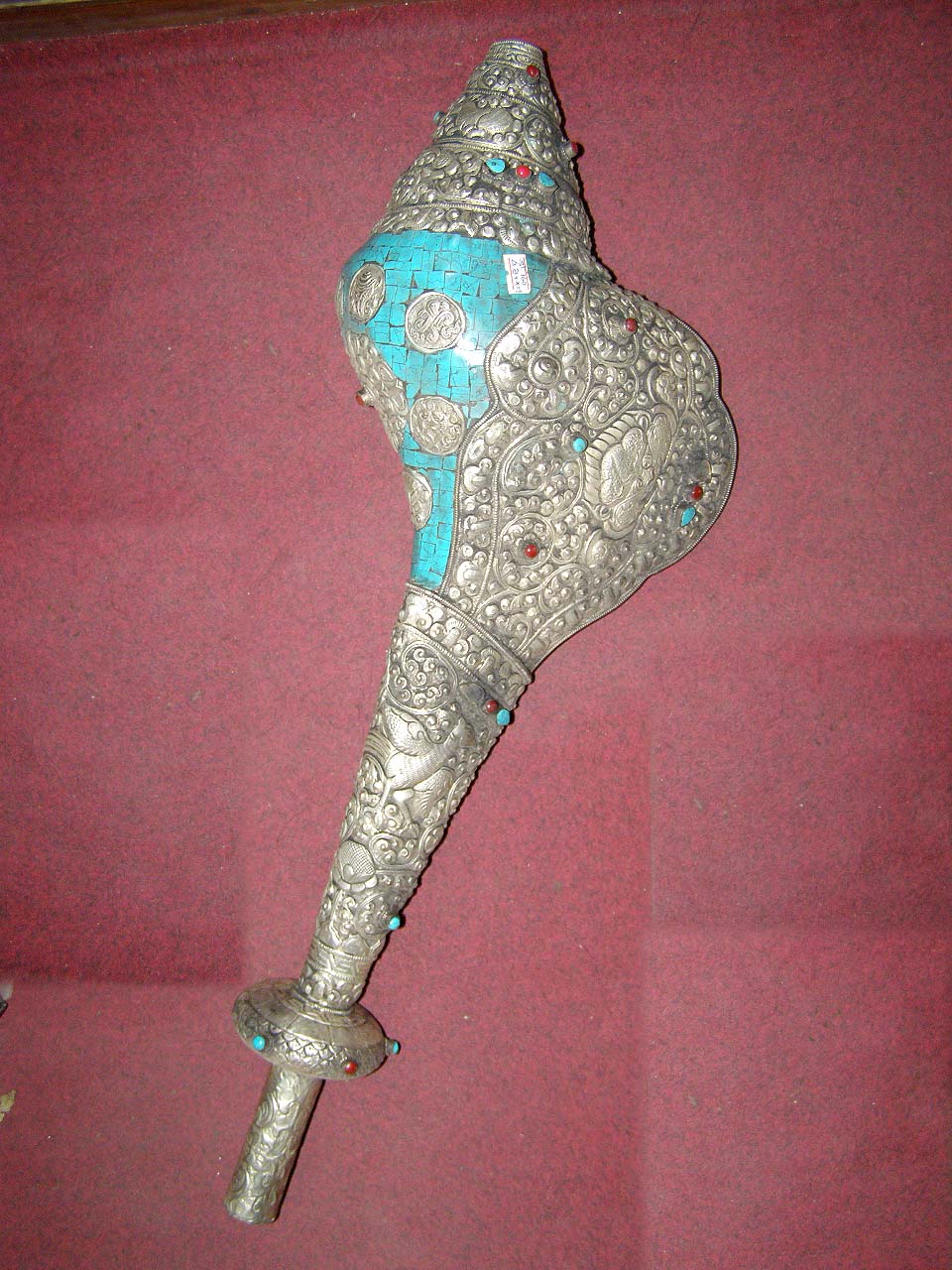Discount Sound Healing
As a direct wholesaler of premium singing bowls, we are thrilled to offer significant price cuts across our extensive collection. By streamlining our supply chain and optimizing our inventory, we’re able to pass on substantial savings directly to you. Our goal is to provide these beautifully handcrafted items at prices that are not just competitive, but truly unbeatable. This isn’t just a sale—it’s an opportunity to acquire high-quality singing bowls at a fraction of the usual cost.
It is one of the main emblems of Vishnu, and his conch bears the name of Panchajanya, meaning 'having control over the five classes of beings.'
Arjuna's (hero of the Mahabharata) mighty conch was known as Devadatta, whose triumphant blast brought terror to the enemy. As a proclaiming battle horn, the conch is akin to the bugle. It is an emblem of power, authority and sovereignty whose blast is believed to banish evil spirits, avert natural disasters, and scare away poisonous creatures.
Today, in its greatly tamed avatar, the conch is used in Tibetan Buddhism to call together religious assemblies. During the actual practise of rituals, it is used both as a musical instrument and as a container for holy water.
Ancient Indian belief classifies the conch into male and female varieties. The thicker-shelled bulbous one is thought to be the male (purusha), and the thin-shelled slender conch to be the female (shankhini).
The fourfold caste division is also applied as follows:
1. The smooth white conch represents the Brahmin caste (priests)
2. The red conch, the kshatriyas (warriors)
3. The yellow conch, the vaishyas (merchants)
4. The grey conch, the shudras (labourers)
Additionally, there is a fundamental classification of conch shells occurring in nature: those that turn to the left and those which turn to the right. Shells which spiral to the right in a clockwise direction are a rarity and are considered especially sacred. The right-spiralling movement of such a conch is believed to echo the celestial motion of the sun, moon, planets and stars across the heavens. The hair whorls on Buddha's head spiral to the right, as do his fine body hairs, the long curl between his eyebrows (urna), and also the conch-like swirl of his navel.
Vajrayana Buddhism absorbed the conch as a symbol which fearlessly proclaimed the truth of the dharma. Among the eight symbols, it stands for the fame of the Buddha's teaching, which spreads in all directions like the sound of the conch trumpet.
In addition to Buddha's throat, the conch also appears as an auspicious mark on the soles, palms, limbs, breast or forehead of a divinely endowed being.
shell cover with white metal with carving.
Conch shell
The conch shell, this has been used as the original from the past ancient times, in ancient history of Nepal and India these horns are used to commence is any rituals or worn. Popularly known as Shanka, is a musical instrument blow by the lord Krishna to declare the start of the war of Mahabharata. in all the epic stories of Hinduism shankha has been described being carried by all the heroes of the past.
Read More
In Vajrayana Buddhism.
This has been recognised as the symbol of fearlessness, and proclaimed the truth of dharma. This is the one of the eight symbols of good fortune this stands for the popularity and fame of Buddhist teaching which spread in all direction like the sound of the Conch Trumpet.
In addition to Buddha's throat, the conch also appears as an auspicious mark on the soles, palms, limbs, breast or forehead of a divinely endowed being.
The fourfold caste division is also applied as follows:
The smooth white conch represents the Brahmin caste (priests)
The red conch, the kshatriyas (warriors)
The yellow conch, the vaishyas (merchants)
The grey conch, the shudras (labourers)
Additionally, there is a fundamental classification of conch shells occurring in nature: those that turn to the left and those which turn to the right. Shells which spiral to the right in a clockwise direction are a rarity and are considered especially sacred. The right-spiralling movement of such a conch is believed to echo the celestial motion of the sun, moon, planets and stars across the heavens. The hair whorls on Buddha's head spiral to the right, as do his fine body hairs, the long curl between his eyebrows (urna), and also the conch-like swirl of his navel.
The Left Turning Conch The Right Turning Conch
It is one of the main emblems of Vishnu, and his conch bears the name of Panchajanya, meaning 'having control over the five classes of beings.'
Arjuna's (hero of the Mahabharata) mighty conch was known as Devadatta, whose triumphant blast brought terror to the enemy. As a proclaiming battle horn, the conch is akin to the bugle. It is an emblem of power, authority and sovereignty whose blast is believed to banish evil spirits, avert natural disasters, and scare away poisonous creatures.
Today, in its greatly tamed avatar, the conch is used in Tibetan Buddhism to call together religious assemblies. During the actual practise of rituals, it is used both as a musical instrument and as a container for holy water.
Ancient Indian belief classifies the conch into male and female varieties. The thicker-shelled bulbous one is thought to be the male (purusha), and the thin-shelled slender conch to be the female (shankhini).
